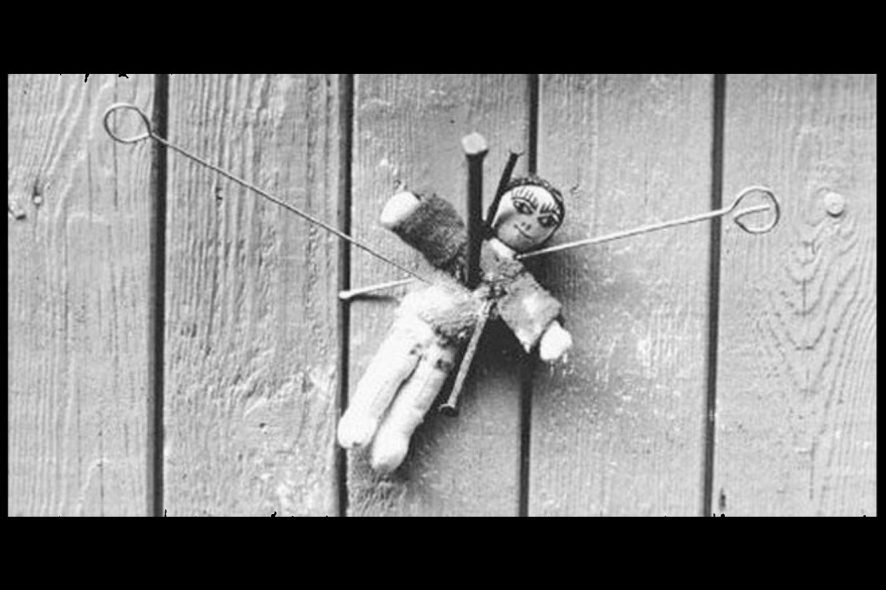Introduction and thesis
The Rajasthan Prevention of Witch-hunting Act, 2015 (hereinafter “the Act”) came into force in April 2015. The special enact ment, as the name suggests, is ostensibly targeted at combating the problem of witch-hunting that prevails in the State. The Preamble to the Act states that the objective of the Act is to “provide effective measures” to “tackle the menace of witch-hunting” and to “prevent the practice of witchcraft”.[1] While the Act has been in force for more than three years now, no conviction under the Act has resulted as of yet.[2] As there is no ruling of the High Court interpreting any of the provisions of the Act,[3] the Act itself along with the Rules made thereunder, “the Rajasthan Prevention of Witch-hunting Rules, 2016” (hereinafter “2016 Rules”) holds fray. The thesis of this essay is that the Act suffers from a problem of overcriminalisation, as is evidenced primarily by Section 2(b)[4] and Section 8[5] of the Act.
ment, as the name suggests, is ostensibly targeted at combating the problem of witch-hunting that prevails in the State. The Preamble to the Act states that the objective of the Act is to “provide effective measures” to “tackle the menace of witch-hunting” and to “prevent the practice of witchcraft”.[1] While the Act has been in force for more than three years now, no conviction under the Act has resulted as of yet.[2] As there is no ruling of the High Court interpreting any of the provisions of the Act,[3] the Act itself along with the Rules made thereunder, “the Rajasthan Prevention of Witch-hunting Rules, 2016” (hereinafter “2016 Rules”) holds fray. The thesis of this essay is that the Act suffers from a problem of overcriminalisation, as is evidenced primarily by Section 2(b)[4] and Section 8[5] of the Act.
Overcriminalisation and the definition of witchcraft under the Act
While a society founded on principles of liberty ought to respect the autonomy of its citizens, the State has the power to criminalise certain modes of conduct.[6] The State’s power to criminalise must be strictly construed, and any overreach of these powers to criminalise conduct not justly falling within the ambit of criminal law must be promptly struck down.
Section 3 of the Act prohibits the commission of witch-hunting and exercise and practice of witchcraft. “Witchcraft” finds a rather peculiar definition under the Act. Generally, it is a central principle of criminalisation that there must be an actus reus (guilty act) and mens rea (guilty state of mind). When either of the two elements is lacking, criminalisation does not generally follow. Under the definition section, the actus reus is the “use of supernatural or magical power” to “call up spirit or cast spell or discover the whereabouts of stolen goods”.[7] The mens rea that the definition provides for is “evil intention”. The actus reus constituting the offence — use of supernatural power — is an impossible act. Even the mens rea requirement of “evil intention” eludes definition. Matters are further complicated by the punishment section for the offence, which adds the additional mens rea requirement of the intention to “cause harm or injury” to any person. The exercise seems largely redundant, as the two mens rea requirements have a significant overlap.[8]
A frustrated actus reus and a vague mens rea thus makes the criminalisation of the exercise and practice of witchcraft absurd and vulnerable to being deployed against minorities. Indeed, the special laws targeted at witchcraft and witch-hunting overwhelmingly target practices of the Dalits and the Adivasis, victimising them further.[9] It must also be remembered at the outset that witch-hunting is a gendered offence, with women being the prime victims of the act.[10] It may thus not be far-fetched to infer that the provision criminalising practice of witchcraft may be put in service of the same motive unfounded allegations of witchcraft are levelled against women for: to rob them of their property or to settle grudges with them,[11] among other “reasons”, albeit this time using State machinery. Moreover, the scheme of the Act appears to be confused: though it is targeted at tackling the problem of witch-hunting the victims of which are usually women and minorities, it also criminalises practice of “witchcraft”, an allegation that usually targets women and minorities. It is submitted that such a result is improper and undesirable for a criminal statute.
Overcriminalisation and the imposition of collective fines
Under Section 15 of the Act, the State Government is empowered to make rules for the implementation of the provisions of the Act. The 2016 Rules have been made in exercise of this power.[12] The 2016 Rules, which came into effect on 26-1-2016 prescribe the manner of inquiry to be undertaken for the imposition of collective fine in an area under Section 8 of the Act. The power of State Government to impose collective fine is to thus be found in Section 8 of the Act read with Rule 3 of the 2016 Rules. This becomes amply clear from the fact that the language of Section 8 itself provides for an “inquiry in the prescribed manner”[13] and Rule 3 lays down the manner of “inquiry under sub-section (1) of Section 8”[14]
Fine is a form of “punishment” under the Penal Code, 1860.[15] Only a sentence authorised by law can be passed by a court of competent jurisdiction.[16] Under the Code of Criminal Procedure, 1973 (hereinafter “the Code”) the criminal law process is divided into the stages of investigation, inquiry and trial. Inquiry follows an investigation and precedes trial, and no penalties generally can be imposed after an inquiry. However, under Section 8(1) read with Rule 3(1), a Sub-Divisional Magistrate may impose a collective fine after conducting only an inquiry. This is against the basic tenet of criminal law that no sanction can be imposed without there being a formal determination of guilt in place.
Rule 3(4) stipulates that the Sub-Divisional Magistrate, while conducting the inquiry, shall adhere to the procedure for summary trials laid down in the Code.[17] However, it must be noted that the procedure for summary trials only gives the Magistrate concerned the power to “try” summarily and not to “inquire” summarily.[18] The language of the section is also vague and uncertain, thus going against the tenets of “fair warning”[19] and “maximum certainty”[20].
It seeks to impose fine on even those who may be “concerned in” the commission of any offence punishable under the Act or who may fail to “render all the assistance in their power” to nab the accused.[21] What qualifies as being “concerned in” the commission of offence is unclear. As far as the duty of persons to aid an ongoing investigation is concerned, an inference may be drawn from Section 39 of the Code. The section fastens a duty on persons to give information about certain offences to a Magistrate or police officer. As compared to offences mentioned in the section,[22] witch-hunting[23] and practice of witchcraft[24] carry comparatively lesser sentences. By enjoining a duty on persons to compulsorily aid the investigation, Section 8 violates the principle of respecting the autonomy of individuals as rational beings capable of making reasoned choices.
Conclusion
Thus, it is submitted that the criminalisation of the practice of witchcraft under Section 2(b) is erroneous since the actus reus for the offence is frustrated and the mens rea constituting the offence is vague. Such criminalisation is also counterintuitive as it makes the law itself an instrument of further victimisation of women and other minorities affected by the practice. The imposition of collective fines on the inhabitants of a defined area is also problematic since the sanction does not flow from a formal adjudication of guilt, and since forcing the inhabitants of such areas to compulsorily aid the investigation process is to disrespect their basic autonomy as human beings. Thus, for reasons given hereinabove, I submit that Sections 2(b) and 8 of the Rajasthan Prevention of Witch-hunting Act, 2015, present a problem of overcriminalisation, which is symptomatic of the entire legislation.
——————————-
† IVth year student, National Law School of India University, Bangalore, e-mail: palashsrivastav28@gmail.com/palashsrivastav@nls.ac.in.
[1] Preamble, The Rajasthan Prevention of Witch-hunting Act, 2015.
[2] M.P. Singh, 50 cases of witch-hunting in Rajasthan in over a year, not one conviction, Indian Express (31-8-2017), available at <http://indianexpress.com/article/india/50-cases-of-witch-hunting-in-rajasthan-in-over-a-year-not-one-conviction-4821381> (last visited on 10-6-2018). No recent data is available with major reporters or the website of the High Court of Rajasthan.
[3] There is only a bail application where the accused is enlarged on bail by the Rajasthan High Court under S. 439 of the Code of Criminal Procedure, 1973 — Mohan Singh v. State of Rajasthan, 2016 SCC OnLine Raj 7892.
[4] Definition of “witchcraft”.
[5] Power of State Government to impose collective fine.
[6] A.P. Simester and G.R. Sullivan, Criminal Law: Theory and Doctrine, 14 (4th Edn., 2010).
[7] S. 2(b), Rajasthan Prevention of Witch-hunting Act, 2015.
[8] For instance, is the “use of supernatural power” to cause an epidemic (a charge often levelled against women accused of witchcraft) a case of evil intention or of intentional harm or injury?
[9] M. Mehra and A. Agrawal, “Witch-hunting” in India? Do We Need Special Laws, 51(13) Economic & Political Weekly 51, 52 (2016).
[10] National Crime Records Bureau, Motives of Murder — 2016 (table) available at <http://ncrb.gov.in/StatPublications/CII/CII2016/pdfs/NEWPDFs/Crime%20in%20India%20-%202016%20Complete%20PDF%20291117.pdf> (last visited on 10-6-2016).
[11] M. Mehra and A. Agrawal, “Witch-hunting” in India? Do We Need Special Laws, 51(13) Economic & Political Weekly 51, 52 (2016).
[12] Preamble, Rajasthan Prevention of Witch-hunting Rules, 2016.
[13] S. 8(1), Rajasthan Prevention of Witch-hunting Act, 2015.
[14] R. 3(1), Rajasthan Prevention of Witch-hunting Rules, 2016.
[15] S. 53, Penal Code, 1860.
[16] Ss. 28 and 29, Code of Criminal Procedure, 1973.
[17] Chapter XXI, Code of Criminal Procedure, 1973.
[18] Ss. 260 and 261, Code of Criminal Procedure, 1973.
[19] A reasonably precise definition of an offence so any reasonable person can form an idea as to what conduct is prohibited.
[20] The definition of any offence must be certain so that the scope of arbitrary discretion is limited and the individual has enough knowledge to regulate her/his conduct.
[21] S. 8, Rajasthan Prevention of Witch-hunting Act, 2015.
[22] Such as offences against the State, offences affecting life et al.
[23] S. 4, Rajasthan Prevention of Witch-hunting Act, 2015.
[24] S. 5, Rajasthan Prevention of Witch-hunting Act, 2015.






